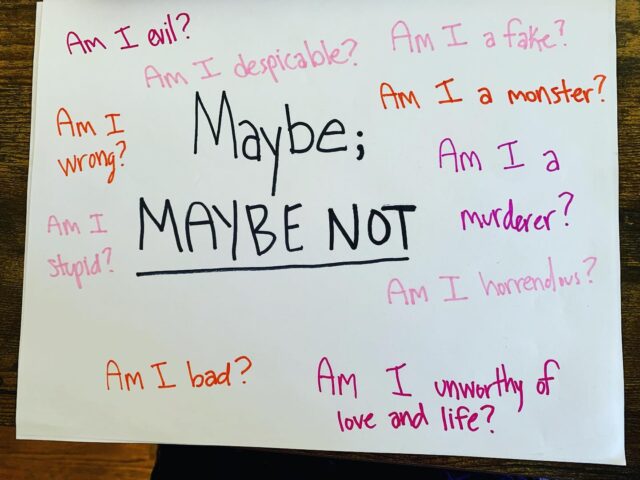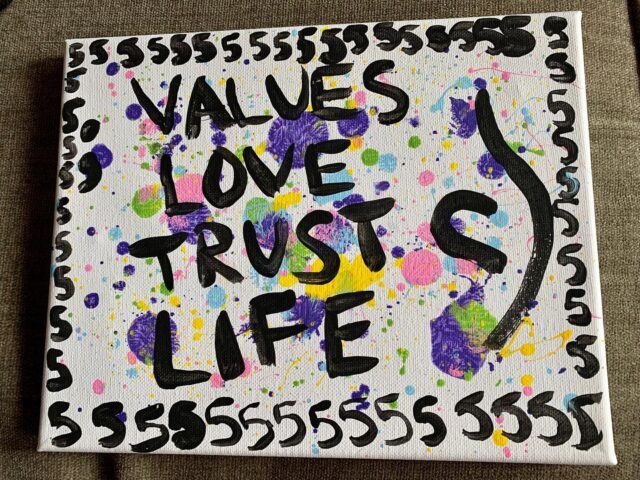
Our daughter began experiencing fairly severe symptoms when she was 7 years old. At first we didn’t realize what was happening, but with a little research we quickly realized that it was likely OCD. It was devastating to watch the transformation of our happy, joyful, care-free daughter into a worried, tired, scared little girl. Her entire life seemed to be controlled by her OCD. As a parent, it felt as if we had lost our daughter.
As we began to research what treatments are available for OCD, we quickly began to realize that CBT (Cognitive Behavioral Therapy) and in particular ERP (Exposure and Response Prevention) were the gold standard for OCD treatment.
One book that was particularly helpful in understanding our daughter’s OCD was Tamar Chansky’s “Freeing Your Child from Obsessive Compulsive Disorder”. It helped us understand what our daughter was experiencing and explained in detail how CBT and ERP are used in the treatment process.
If your child is not aware that she has OCD, I would suggest letting her know. Our daughter showed improvement as soon as she realized that there was a name for what she was experiencing and that others have it, and that there is helpful treatment. The book “Up and Down the Worry Hill” by Aureen Wagner can be read to your child and introduces OCD as well as ERP concepts in a simple and approachable way.
Next, we realized that it was vital that we find the right therapist for our daughter. This is probably the most important step in process. Finding the right therapist can be a godsend. Starting therapy with the wrong therapist can really hinder the recovery process. For our family, we felt it was vital that the therapist meet these criteria:
– Specialist in OCD treatment. There are many types of anxiety, each with different types of treatment. OCD itself can take many forms, and different people respond to different types of ERP, so having a therapist with extensive experience with OCD will make it more likely that they have treated similar issues to what your child is experiencing.
– Practitioner of CBT and ERP. This is a must. ERP is the gold standard for OCD treatment. If a therapist doesn’t focus on ERP, he/she probably isn’t the right person.
– Experienced with children. There are many nuances of treating a child with OCD vs treating an adult. Sure, both use CBT and ERP, but an ERP exercise that works for an adult probably is not optimal a child. Make sure your therapist has LOTS of experience working with children, and try to determine if he/she will be able to relate to your child. Many of the things that your child will have to share in therapy could be embarrassing or scary; a trusting relationship with the therapist is extremly important.
– Partners with the parents. OCD therapy including CBT and ERP is much more effective when there is a partnership between the child, the therapist, and the parents. Make sure your therapist plans to include you in the therapy sessions, and has expectations that you will play a significant role at home in your child’s ongoing treatment and recovery.
Spend the time and effort to find the best therapist for your child. Research. Find discussion groups and forums. Ask for referrals. See if there are support groups in the area. Make contacts. Do google searches. Read reviews. Examine therapist websites. Check out the International OCD Foundation website. Find someone you feel comfortable with and can help your child.
Once our family found the right therapist, we stared to see results very quickly. In our first session, our therapist had our daughter name and draw a picture of her “worry monster”. Then for a whole week we all played an “I spy” game, and whenever we (mom, dad, or daughter) noticed an OCD worry or behavior we would call out “I spy the worry monster” and write down the fear or behavior on a sheet of paper (multiple sheets actually). At the end of the week, we had recorded 140 times that we spied her OCD monster trying to make our daughter’s life miserable. This exercise really helped my daughter separate herself from the fears, and assign them to OCD. I hope all therapists do this. It was so helpful to our daughter!
And then the hard work started. Weekly therapy sessions, and ERP exercises at home several times a day. Be ready for it. It’s not easy. It’s not fun. You’ll be doing exercises with your child that require them to face their fears and stoke their anxiety. It feels like anti-parenting at times. As a parent, you have a natural tendency to protect, nurture, and reassure. With ERP you need to be ready to lead your child into potentially scary and anxiety provoking situations. Again, it’s not fun. It’s hard work, both for you and your child. But it works. Stick with it. Be consistent. Don’t give up. Recovery won’t be a straight line. There will be ups and down. But over time, things will get better.
With 10 months of hard work, and the help of an amazing therapist, our daughter made huge improvements. As our daughter approached “graduation” from therapy, our therapist had us repeat the “I spy” game. After a week, we only spied our daughter’s OCD monster 6 times. That’s not zero, but it was amazing progress. We felt like we had our daughter back, happy and joyful. Don’t expect OCD to disappear completely, but with hard work you can help your child live a happy life. And with the skills learned in therapy, you and your child can better manage fluctuations in their OCD in the future.
Final advice. Educate yourself; you will be part of the solution. Spend the time to find the right therapy and therapist; this is invaluable. Be willing to work hard; be consistent. Be patient; things will get better.




